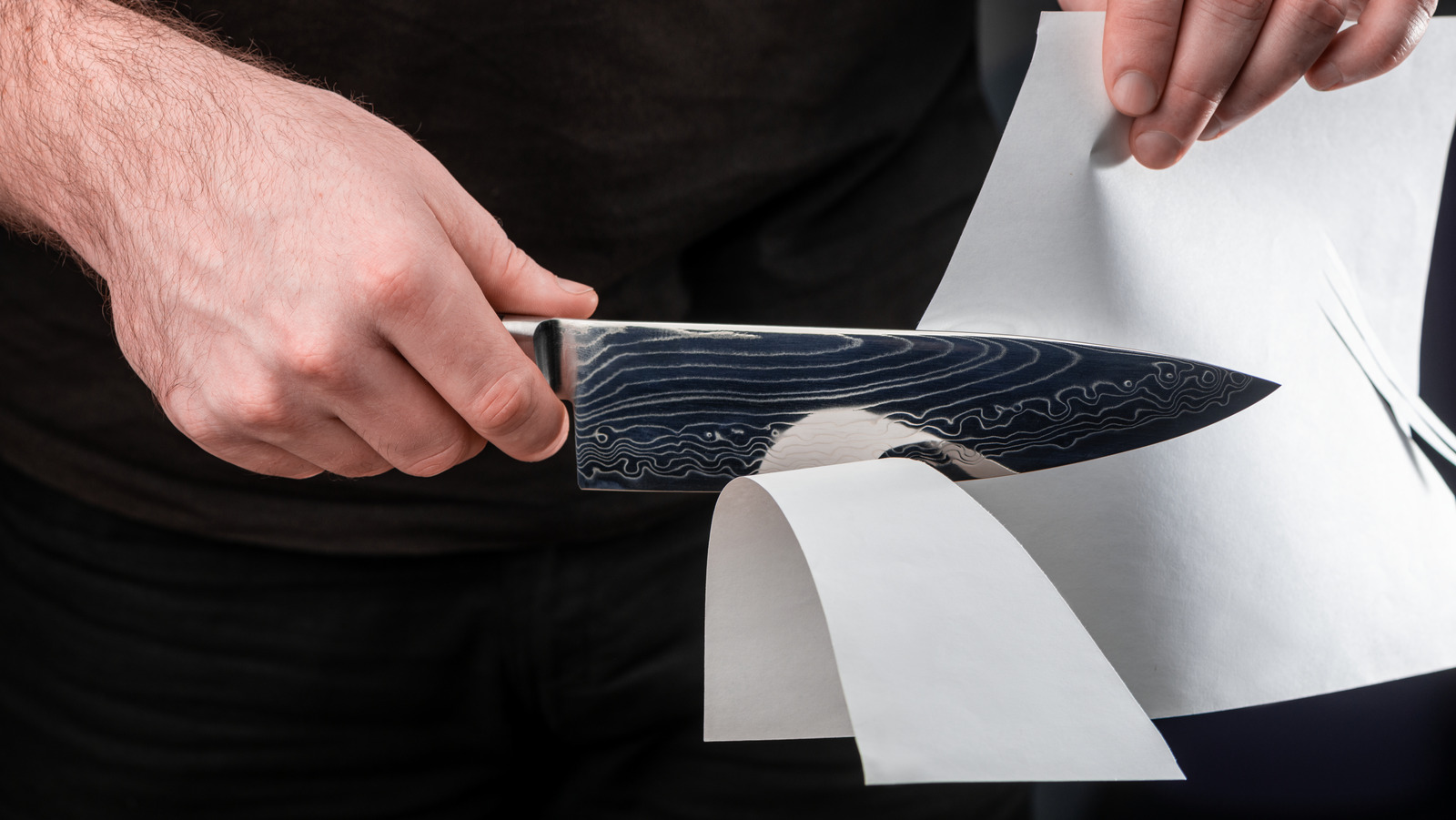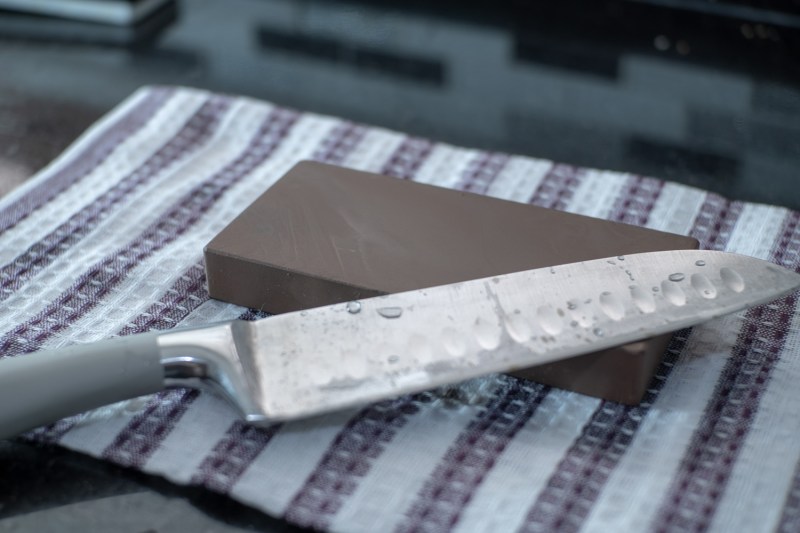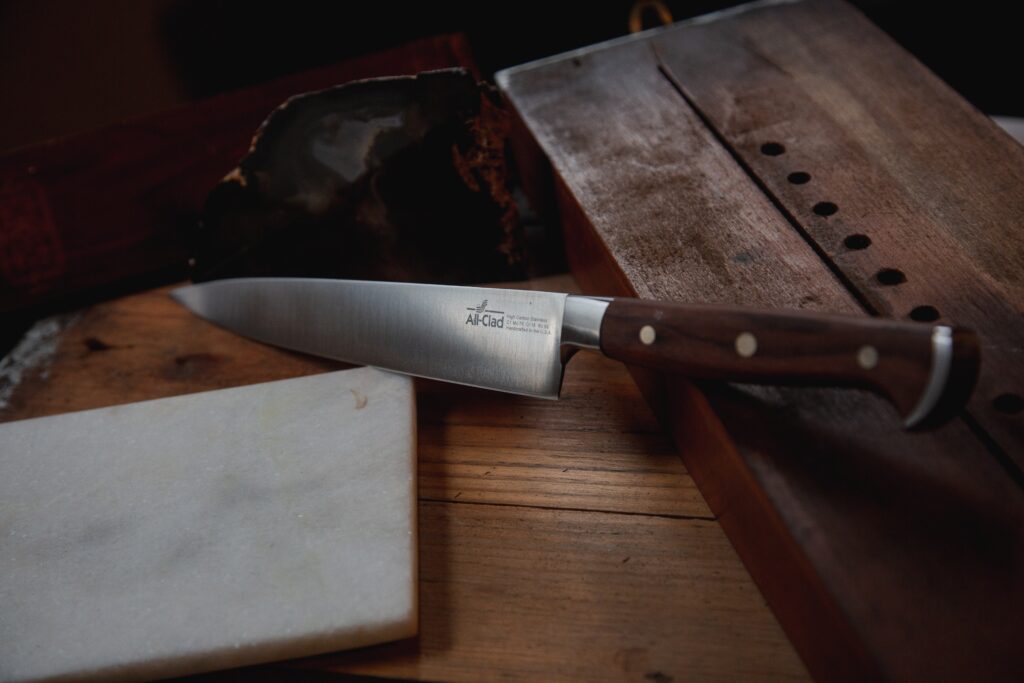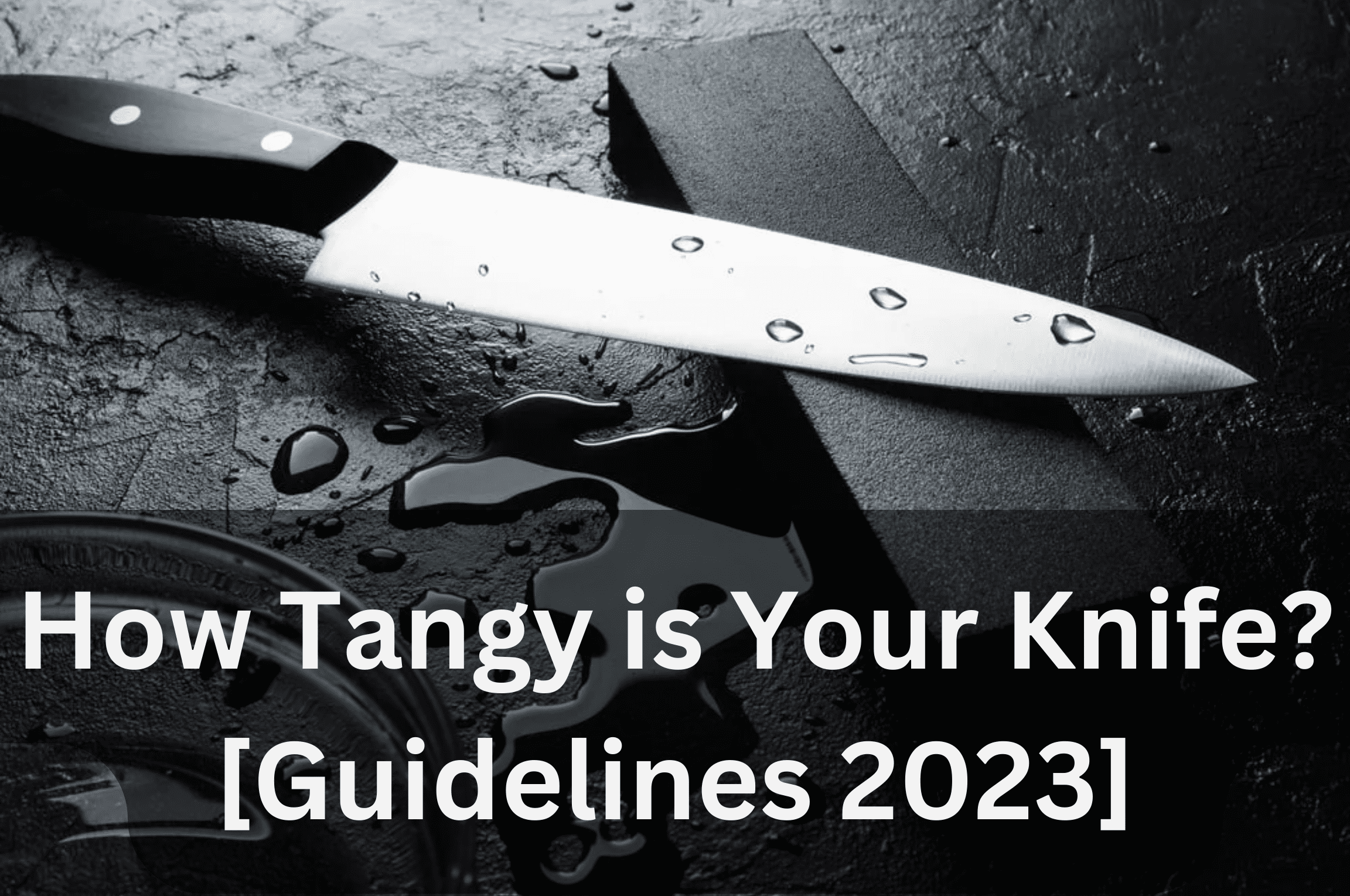
The tang is the metal part of your knife that runs through its handle, often including an iron or steel body. The full tang is one of the most well-known parts of knives. It means that there’s an unbroken piece from blade to handle which ensures greater durability and balance in your cutting tools, so you can easily get through the task. In this blog, we will discuss How Tangy is Your Knife?
What Is There Beside Full Tang?
Full tang makes a knife very durable, but frankly, not all knives need to be that hardy, so there are several variations.

- Full Tang: The metal goes all the way through the knife handle.
- Push Tang: The blade is pushed into a premade handle.
- Rat Tail Tang: The metal thins out into the handle.
- Encapsulated Tang: The knife handle is formed around the metal.
It is common for knives to be fixed together with an adhesive to ensure that they stay together, but in most cases, this is not enough to keep them together. If you are concerned about your knife being held by nothing more than glue (which could eventually fail), remember that there are usually pins that run through the handle as well as the metal to hold the knife in place.
What is the best Tang for you?
As an alternative to full-tang knives, partial-tang knives are an interesting option as they provide an interesting alternative to full-tang knives. In spite of the fact that partial blades can reduce the weight and overall dimensions while still offering strong durability, a true knife with more than just its tip will always be able to cut better because it has greater force behind each stroke because it has a larger surface area.
When you’re running through jungles hacking away at thick vines and brush, a full tang bushcraft knife will come in handy. But if all your needs are general cutting around the job or house then it’s nice to have an EDC with a partial blade design so that there isn’t too much stress on one spot when using this type of equipment.
A good quality fixed-blade hunting and camping knife can be used as both everyday carry (EDC) tools for doing minor work like opening packages at home; basic field dressing animals.
Nobody Likes A Dull Knife
When you are frustrated with your dull knives, it’s easy to get discouraged and give up on them. You might think that sharpening a blade is difficult or time-consuming but the truth of the matter is there’s more than one way to do this properly so as long as they’re taken care of in order from start-to-finish everything will go smoothly. Here I’ll show how to simply sharpen.
How to get a Sharp Knife?

- High-quality sharpener preferably
- Diamond cutting
- The finishing surface is made of hard stone or ceramic abrasive
- Mineral Oil or Water depending on the stone.
To get the best results, you should know what angle to sharpen your knife at. If in doubt go with 10-30 degrees per side of the knee on both sides for maximum satisfaction and longevity. A compromise between 17° – 20° will provide an edge that lasts while still being quick enough so it won’t take long before getting tired of work or finishing off tasks without sacrificing quality finishes.

As soon as you have lubricated your whetstone with mineral oil, you can move on to the next step of the procedure. In case you skip this one, you will be able to cut through stone easier and prevent shavings from clogging passageways between stones or areas you use frequently, so you don’t have to clean them up as frequently, which is a good thing if you use these tools frequently, as everyone needs a break from time to time.
The importance of maintaining your knives cannot be overstated. If you want a knife that will last for years, keep it sharp. A dull blade is more likely to chip or break when used; while this might not seem like an issue at first glance (after all who has time?), the truth lies in how much harder getting food off can become with damaged tools–especially if there are children around whom need feeding soon after cooking dinner.
Conclusion

Knife enthusiasts are obsessed with full tang knives because they offer a few key advantages over their counterparts. First and foremost, the full tang provides stability and balance in your hand, making it easier to control the knife’s movements. The last advantage of using a full tang knife is that it is less likely to fall apart or come loose at the hilt, even after years of use and abuse.
Read our next article: How many kitchen knives do you really need
FaQ
Q: What does tang mean on a knife?
The term “tang” on a knife refers to the portion of the blade that extends into the handle. The blade part provides structural support and stability to the knife. A full tang means that the blade extends the handle’s full length, offering better balance, durability, and strength. A partial tang is the notion that describes the blade extending only partially into the handle, which may reduce stability and durability.
Q: Is full tang a good knife?
Yes, a full tang knife is generally a good knife. A full tang design, where the blade extends the handle’s full length, offers several advantages. It provides better balance, durability, and strength to the knife.
This design is often preferred for heavy-duty tasks, as it can withstand more force and provides better control. However, it’s important to note that a knife’s overall quality and performance depend on various factors, including the type of steel, craftsmanship, and intended use, in addition to the full tang design.
Q: Why is full tang better?
Full tang is preferred for heavy-duty tasks, while rat-tail tang is less sturdy. Push tang and encapsulated tang are used in specific knife designs or for aesthetic purposes. Consider the tang type when selecting a knife: consider your purposes and what you will cut with the knife.
Q: What are the four 4 types of tang?
There are four common types of tang found in knives. A full tang is where the blade is hidden inside the handle, providing optimal strength and durability. Push tang, or stick tang, extends partially into the handle, secured by pressure or friction.
Rat-tailed tang is a narrow, tapering extension of the blade that runs through the handle, commonly found in inexpensive or decorative knives. Encapsulated or hidden tang is fully enclosed within the handle material, often used in traditional or decorative knives. Each tang type offers different levels of strength and stability.


